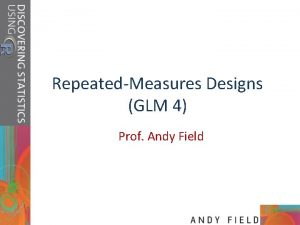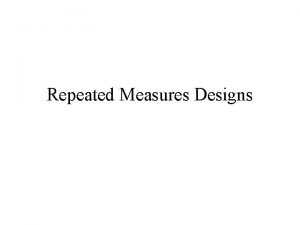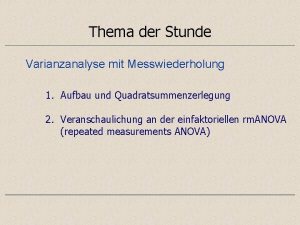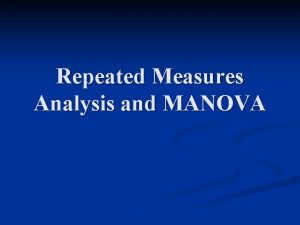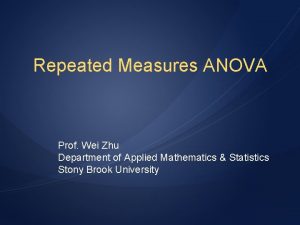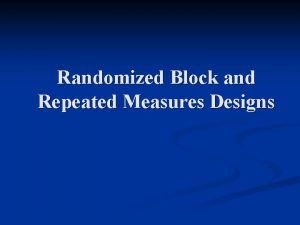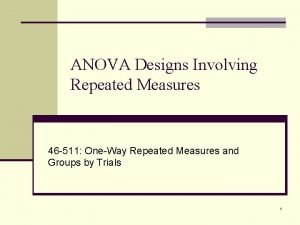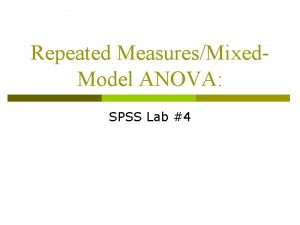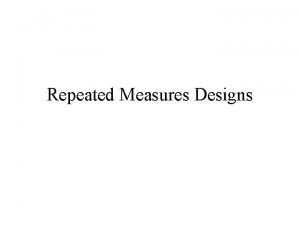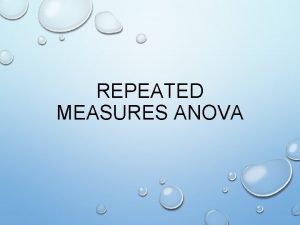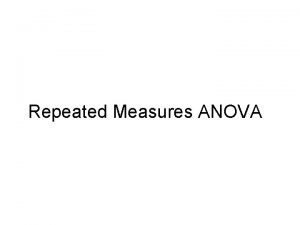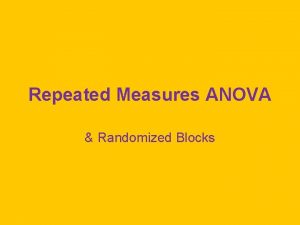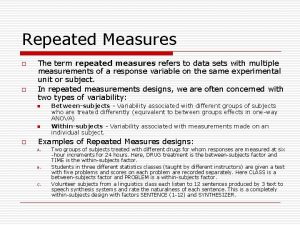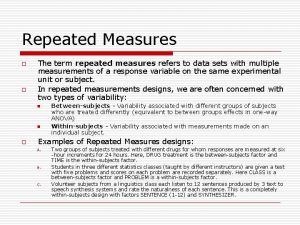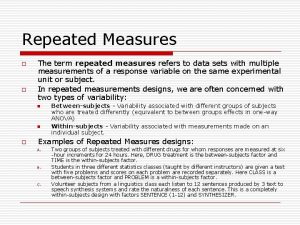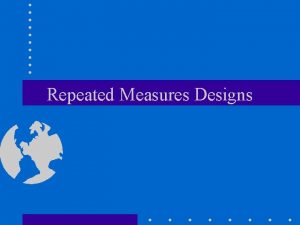Repeated Measures ANOVA One Factor Correlated Measures Same














- Slides: 14

Repeated Measures ANOVA One Factor, Correlated Measures: Same reasoning of Correlated Measures t-test More Power (and more efficient) Pulls out relatively small differences among treatments Relative to Big differences among subjects Removes Differences among subjects from error term

Subjects vs. Treatments Large Differences (Error) Small Differences (Effect)

Partitioning The Variance SSTotal = SSSubjects + SSTreatment + SSError Is the Variability which a single subject would have If you repeatedly measured him without changing treatment

Partitioning The Variance Common Response to Tx Unique Response to Tx SSTotal = SSSubjects + SSTreatment + SSError Is the Variability which a single subject would have If you repeatedly measured him without changing treatment

The Structure of the ANOVA Partitioning the Total Sum of Squared Deviations From the Grand Mean Spontaneous Variability of Subject Change is not the same for each Subject D. V. : Test Score E. G. , Strategies Subjects If you test your subjects repeatedly: Counter Balance for (e. g. ) practice effects/fatigue

POC: Piece of Cake

Step 1: Find The Total SS

Step 2: Compute Between Subjects SS

Step 3: Compute Treatment SS

Step 4: Compute SS Error This is the Same as the Interaction Term in a 2 -Way ANOVA IV 1: Treatment IV 2: Subject Interaction: Subject x Treatment

Step 5: Determine Degrees of Freedom Just like Interaction df

Step 6: Calculate MS & F

If ANOVA is Significant Use Tukey Test to compare treatments Nt is Number of Subjects in your Experiment

Caution • Caryover effects Counter-balance Vs. Trend Analysis • Populations Normally Distributed
 Andy field anova
Andy field anova Repeated-measures design
Repeated-measures design Anova repeated measures
Anova repeated measures Quadratsummenzerlegung anova
Quadratsummenzerlegung anova Data editor spss
Data editor spss Example of repeated measures anova
Example of repeated measures anova Two-way repeated measure anova
Two-way repeated measure anova Repeated measures anova jmp
Repeated measures anova jmp Perbedaan one way two way anova
Perbedaan one way two way anova One way anova vs two way anova
One way anova vs two way anova Contoh one way anova dan two way anova
Contoh one way anova dan two way anova Two-way repeated measure anova
Two-way repeated measure anova Manova with repeated measures
Manova with repeated measures Repeated measures design
Repeated measures design Matched groups design
Matched groups design
